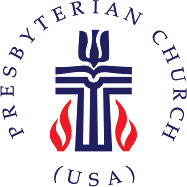 My apologies for missing the Palm Sunday entry last week. Life events got the better of me, and by the time I'd realized that I still needed to write the entry, it was already far enough past when the entry should have shown up that I decided it was better just to accept the loss and move on towards Easter.
My apologies for missing the Palm Sunday entry last week. Life events got the better of me, and by the time I'd realized that I still needed to write the entry, it was already far enough past when the entry should have shown up that I decided it was better just to accept the loss and move on towards Easter.Here are the passages for April 12th, 2009, Easter Sunday (Year B). I think that I can safely say that Easter is the most important holiday of the church year, and celebrates the most pivotal event in all of history. It is my firm belief that without a doctrine of the resurrection, none of the other doctrines that we Presbyterians (let alone Christians in general) might argue about have any significance whatsoever. All links are to the TNIV via BibleGateway.com, but if you prefer another translation, feel free to use that instead (either with your own Bible, or via the drop-down menu at BibleGateway.com).
Isaiah 25:6-9
Psalm 118:1-2, 14-24
1 Corinthians 15:1-11
- What about the church in Corinth made Paul feel that a reminder about the nature of the gospel was necessary? How might modern congregations compare?
- Peter makes a point of talking about how only a few people (those whom God had chosen) actually saw the risen Jesus. Why should Jesus have appeared to so few? Why should Peter make such a point of mentioning it?
- The different gospels tell the story of the empty tomb in different ways. In this version, we aren't told that Mary looked in the tomb (although she seemed to be aware that Jesus' body was no longer inside), but rather that she ran to disciples upon seeing the stone rolled away, and that Peter went inside. Peter is given great emphasis here. Both Mary and the unnamed disciple with him had reached the tomb first, but Peter was the one to actually go in. Why does this telling of the story go to such great lengths to highlight Peter's actions here?
- I'm curious about a translation issue in regard to verses 8 and 9. We are told that the other disciple "saw and believed" (why isn't this spelled out in regard to Peter?), but immediately told that "They still did not understand... that Jesus had to rise from the dead." Did they still not understand upon seeing the linens? If not, what did the disciple believe at that point? If they (or just he?) did at this point understand, why doesn't the translation say that they "hadn't" understood (a tense which more clearly suggests that they do understand now that they've seen the empty tomb)? Surely the Greek would have been able to carry that sense (I know Koine has a past perfect tense), if the author intended it. (Of the 20 different translation I've consulted, only two seem to use language implied that the disciple finally figured it out: the paraphrased "New Living Translation," and the "Worldwide English" New Testament. I honestly don't know much about the latter, but it appears to be a translation written by a single person, rather a group of scholars, as is the case with most translations.)
- It's clear enough that people don't always recognize Jesus immediately when they see him after the resurrection, as is the case with Mary here. Is this due to a difference in Jesus' appearance (he looks different enough not to be immediately recognized, but similar enough that they can eventually figure it out), or is it something on the part of each of the people we read having this difficulty (i.e., they simply can't bring themselves to believe a dead person is alive again, or perhaps God is somehow preventing them from recognizing Jesus until the appropriate time)?
- Although there are verses in Mark that follow after the end of this passage, none of the earliest manuscripts include them. How is it that this could be deemed a satisfactory end to this gospel, at least in those manuscripts that were circulating with nothing else afterward? We see the empty tomb, but Jesus hasn't appeared to anyone yet, and the people to whom the angel has spoken are left "trembling and bewildered" and too afraid to even tell anyone else what they had just witnessed.








No comments:
Post a Comment